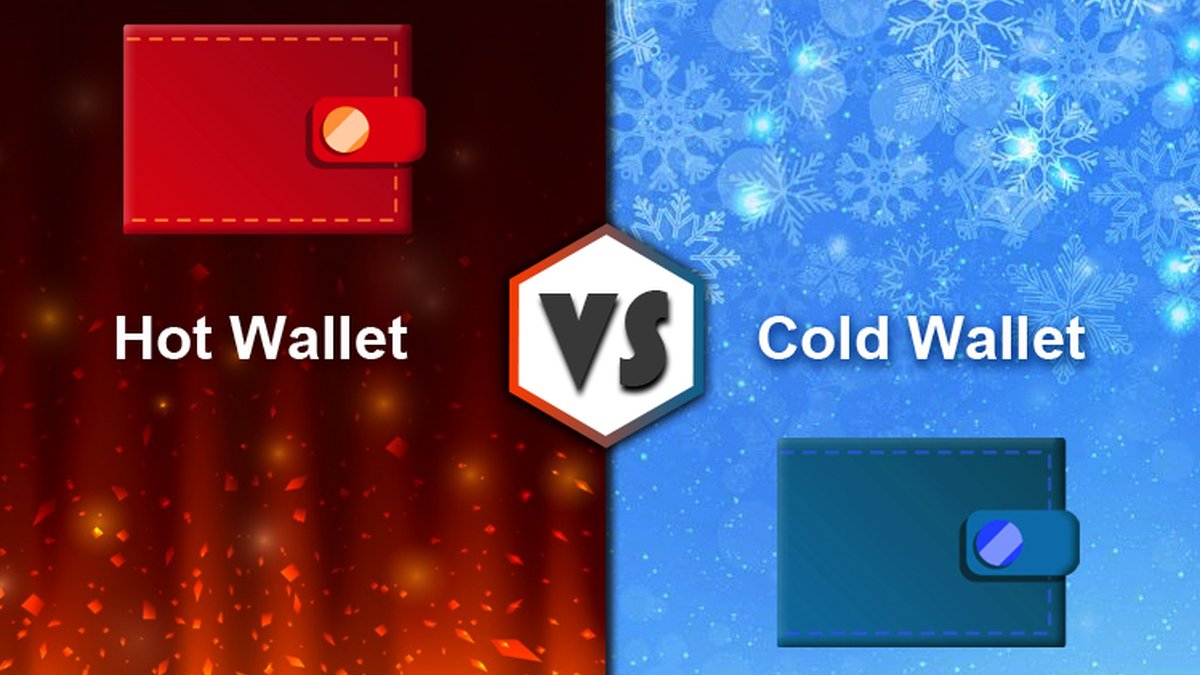Choosing where to keep private keys is a core security decision. Cold storage (keys offline) maximizes security but reduces convenience. Hot wallets (online) maximize access but increase attack surface. This guide compares both approaches in detail, gives real examples and failure modes, and provides practical checklists so you can design a storage strategy that fits your risk profile.
1. What is cold storage?
Cold storage means private keys never touch an internet-connected device. Typical forms: hardware wallets (Ledger, Trezor), air-gapped devices, paper wallets, and metal seed backups.
Detailed advantages
- Strong resistance to online attacks: malware, phishing and remote exploits cannot read or export keys that remain offline.
- Appropriate for long-term holdings: suitable for custody of large positions or treasury reserves where frequent spending is not required.
- Durability with proper backups: metal seed plates survive fire/flood better than paper; geographic separation reduces single-point physical risk.
Detailed disadvantages
- Lower liquidity/slow access: signing requires physical access to the device. Not convenient for rapid DeFi interactions or NFT drops.
- Physical risks: theft, damage, or loss of the device or backup seeds. Human error when writing seeds is a common failure mode.
- Operational complexity: secure firmware updates, air-gapped workflows and recovery testing add operational overhead.
Operational example (cold)
A user holding $250,000 in crypto sets up two hardware wallets, writes seed phrases onto two stainless steel plates, stores them in separate bank safe deposit boxes across different cities, and tests recovery on a spare device before funding the wallets.
2. What is a hot wallet?
Hot wallets are software wallets connected to the internet: browser extensions (MetaMask), mobile wallets (Trust Wallet), custodial wallets on exchanges, or desktop apps.
Detailed advantages
- Convenience and speed: immediate access for trading, DeFi, NFT minting and frequent transfers.
- Integration: easy wallet-to-dApp connectivity and support for smart-contract interactions.
- Lower initial setup cost: no hardware required; suitable for small, active balances.
Detailed disadvantages
- Higher online attack surface: phishing, malicious browser extensions, clipboard hijackers and device malware can compromise keys or trick users into signing harmful transactions.
- Custodial risk: if you use an exchange wallet you are exposed to exchange hacks, freezes or insolvency.
- Operational vigilance required: regular approval revocation, careful contract address verification and strong 2FA are mandatory.
Operational example (hot)
A day trader keeps 5% of their portfolio in MetaMask for DEX trading. They use a dedicated browser profile with only the wallet extension installed, enable hardware WebAuthn (YubiKey) for exchange logins, and schedule weekly checks to revoke token approvals and monitor unusual activity.
3. Direct comparison (quick table)
| Criterion | Cold Storage | Hot Wallet |
|---|---|---|
| Security vs online attacks | Very high | Lower |
| Convenience | Low | High |
| Physical risk | Present (loss/damage) | Low |
| Best for | Long-term reserves, large holdings | Active trading, DeFi, small daily balances |
4. Hybrid approach: cold for core, hot for spend
The recommended pattern is “cold for core, hot for spend.” Example allocation: keep 80–95% of assets in cold storage; keep 5–20% in hot wallets for trading and day-to-day activity. Organizations should use multisig cold vaults (Gnosis Safe + hardware signers) and maintain a separate hot environment for market operations.
5. Best-practice checklist — cold storage
- Buy devices from official vendors; verify tamper seals and firmware signatures.
- Write seed words on metal plates, not paper, for durability; store plates in geographically separated secure locations.
- Use passphrases only if you understand recovery implications; store passphrase offline separately from the seed.
- Test the recovery process on a spare device before moving large funds.
- Keep firmware updated on a clean machine and verify release signatures.
6. Best-practice checklist — hot wallets
- Use a dedicated, minimal browser profile or device for wallet activity; limit installed extensions.
- Prefer hardware signing (Ledger/Trezor + WalletConnect) when interacting with dApps.
- Use authenticator apps or hardware U2F keys for account 2FA; avoid SMS 2FA.
- Grant only read-only API keys to third-party services; disable withdrawal rights.
- Regularly review and revoke token approvals (Revoke.cash / Etherscan approval checker).
7. Examples by capital size
- Retail, ~$5k: 90% cold (hardware wallet), 10% hot for trades.
- High net worth, ~$250k: Core 85% in multisig cold vaults, 10% hot for active management, 5% liquidity/stable.
- Institution / fund: Multisig cold custody with hardware signers, timelocks for large transfers, audited cold-storage SOPs, separate hot pools for market-making with strict limits.
8. Common mistakes and how to avoid them
- Storing seed as a photo or cloud note — never store seeds digitally.
- Failing to test recovery — always perform a full restore test on a spare device.
- Using a single copy of backup — use multiple, geographically dispersed backups.
- Keeping all funds on one exchange — diversify custodians and limit per-exchange exposure.
9. Final recommendation
There is no one-size-fits-all answer. For most users the safest and most practical posture is a hybrid: cold for the majority of value and hot for operational needs. For organizations and funds, adopt multisig cold vaults with documented SOPs and minimal hot pools with strict size and operational controls. Always test recovery, minimize human error paths, and keep operational procedures simple and repeatable.
Disclaimer: This guide is informational and operational. It is not legal or financial advice. Adapt procedures to your risk profile and consult security professionals for enterprise deployments.







